Living and dying in Sullivan County, one of Pennsylvania's most rural counties
Published in Lifestyles
FORKSVILLE, Pa. -- On a stormy Sunday night in late June, one of Sullivan County’s newer residents stomped his little sneakers in rainbow-ringed puddles outside his parents’ gas station in a tiny town where two clear creeks converge.
Up the road, past Forksville’s wooden covered bridge, county settlers rest in a hilly cemetery where some tombstones are weather-beaten from hundreds of winters. Descendants of the Baumunks and Browns, the Rogers, Higleys, McCartys, and countless others buried there still call this deeply rural Northeastern Pennsylvania county home.
But, like much of rural America, it’s shrinking.
Over the last year, the Center for Rural Pennsylvania looked ahead to 2050 and predicted population losses in most rural counties, some as steep as a 24% drop.
Population loss affects every aspect of daily life, including health care, school district and municipal budgets, and even the ability to lure in new businesses, like Sheetz. But it’s more than just business and budgets, said Kyle Kopko, executive director of the Center for Rural Pennsylvania. It’s also about the fundamental balance of young students, a middle-age workforce, and retired elderly a society needs to function.
Manny and Shivani Patel moved to Sullivan County in 2019, when they bought the Between Bridges general store and gas station in Forksville. They lived in the Scranton area, where they’d gone to college, and had grown up in Gujarat, the westernmost state of India. They both worked in the pharmaceutical industry before selling fish hooks, marshmallows, and deli sandwiches at the general store. Locals helped them find a home, built in 1900, that’s less than a quarter-mile up the road.
“It’s peaceful and it’s beautiful,” Manny Patel said, leaning on his truck in the parking lot. “And we haven’t seen as many bears as you’d think.”
Together with their son, Ekantik, who is 5, the Patels pushed Forksville’s population to about 110. Their story, however, is an outlier in Sullivan County and the rest of ever-shrinking rural Pennsylvania. Deaths outpace births here, and while that has become common in rural America, Sullivan County stands out. Its median age — 55 — makes it one of the nation’s oldest counties, and from 2010 to 2020, when Sullivan’s population dropped from 6,556 to 5,840, the county had the highest death rate in Pennsylvania.
Sullivan County, which is mountainous, heavily forested, and far from major highways, has always been one of Pennsylvania’s least-populated counties, so its projected 2.7% decrease over the next 30 years isn’t a “death sentence,” officials said, but rather part of a “cycle.”
“It’s not just the raw numbers changing, it’s the composition,” Kopko said. “We will have a much older population and fewer younger people. That’s what’s so concerning.”
Over the last five months, The Inquirer visited Sullivan County, talking to graduates heading to college, a South Philly musician who serves up authentic cheesesteaks by the covered bridge, volunteers at the oldest bowhunting festival in the world, and a former banker determined to build a state-of-the-art wellness center unlike anything the county’s ever seen. Some residents don’t mind the county shrinking, hoping to keep their paradise a secret, and some, like the Patels, say they found their American dream, way out in Sullivan County.
Sullivan County has always been small. It doesn’t look all that different than it did when those first settlers arrived in the 1700s.
But how small can a county get?
‘Maybe I’ll come back around retirement’
Intermittent rain pelted the metal roof of a large, wooden barn at the Sullivan County Fairgrounds before dusk on a Friday in early June. Teens in ties and dresses walked across the grass and gravel, holding white and red caps and gowns. Family filed in after them, with flowers, filling the wooden grandstand benches as sunbeams cut the clouds outside.
It was graduation night for Sullivan County High School’s Class of 2024. In the same building where they have horse and pony pulls for the county fair, 43 Sullivan County seniors would get their diplomas.
“Who knows what life will bring and where our journeys will take us,” valedictorian Miranda Klein told fellow graduates.
Sullivan and other rural counties, particularly in the Poconos, saw an influx of second-home owners spending extended time there during the pandemic when more people were working remotely. Real estate sales and rentals boomed, too, though the sales were also mostly second homes.
“It was so busy, I couldn’t handle it. I sold three homes, sight unseen,” Sullivan County real estate agent Tina Richlin told The Inquirer in May 2020.
Officials in rural counties, including Sullivan, believed the 2020 U.S. Census failed to account for the pandemic, and some considered challenging the results.
In Sullivan County, county commissioners said houses are rarely on the market long and, increasingly, more are being converted into short-term rentals.
The true measure of whether an area is growing, officials say, is whether young people are moving in, having children, and sending them to local schools. The Wallenpaupack Area School District, which draws from tourist-heavy Pike and Wayne Counties, in the Poconos, went from 1‚500 students in 2010 to 1,000 in 2024, and district officials said it could drop to 800 in the years to come.
Sullivan County’s enrollment has fluctuated in recent years. Federal statistics show 631 students in the 2009-10 and 2004-05 school years. A former Sullivan County superintendent told The Inquirer the district had around 700 students in 2020 and 2021. Current Superintendent Doug Lindner told The Inquirer enrollment was 620, an increase of 30 students from last year.
Most smaller schools consolidated into one countywide district in 1966, but Lindner said population doesn’t tell the full story there. Most of the county’s homes, approximately 57%, are nonresident, vacation properties, he said.
Graduate Noah Hallabuk was heading 40 miles south, to study nursing at Bloomsburg University, but wasn’t sure if or when he’d be back.
“I haven’t fully decided yet. Maybe I’ll come back around retirement age,” he said. “I definitely want to get out and explore the world a little bit more.”
Chris McMahon, who works in maintenance for the school district, stood to the side of the stage, thinking about his own graduation from Sullivan County High School in 1978. He was raised on a dairy farm.
Today, he said, there are fewer dairy cows, and fewer students.
“I think we had 129 in my graduating class,” he said, exactly three times this year’s graduates.
A shrinking workforce
In Dushore, Sullivan County’s busiest town, Pam’s Restaurant was bustling on a Monday morning in June and decorated in red, white, and blue as Independence Day approached. Lyndeana Stoddard’s family has owned Pam’s for decades, and her daughter, the valedictorian, Miranda Klein, worked there all summer before heading to Kutztown University to study medical administration.
Stoddard would love for Klein to come home after college but isn’t sure what Sullivan County has for her.
“There’s not enough industry in this county, so people travel to other counties to work,” Stoddard said.
Klein said she’s torn between wanderlust and small-town life. Many of her classmates feel the same way, she said. She envisions a future farther east, in a rapidly growing part of Pennsylvania that no longer feels rural.
“I see myself in the Lehigh Valley,” she said.
The Center for Rural Pennsylvania, a nonpartisan research arm of the General Assembly, predicted that 21 of Pennsylvania’s 67 counties would grow over the next three decades, including Lehigh County, but 46, mostly rural counties would see a decrease, including a whopping 24.3% projected decline in Pike County.
Dialing in, the center said the decrease in youth, in particular, can set counties like Sullivan up for problems in the decades to come. In rural counties, there was a 34% decrease in the youth population from 1960 to 2020, compared with a 22% decrease in the youth population in more urban areas over that span.
In the distant past, Sullivan has had timber booms, leather tanneries, some anthracite coal, and agriculture, its population peaking in 1900 at 12,134 — more than double what it is now. The county never became industrial enough to suffer the postindustrial decay plaguing Pennsylvania towns where houses can be bought for the price of a used car.
With so much forested land, lumber and woodworking is still a way to make a living in Sullivan County, albeit a difficult one.
“What you need is more workers like me or more younger kids in the woods,” said logger Richard Jordan after stacking a load of oak destined for campfires and fireplaces. “They can teach you how to cut wood, but it’s a lot easier if you grow up with it. My grandfather did it, and my dad’s my only employee. He runs the skidder for me. He’s 81 years old.”
No major highways cut through Sullivan County’s valleys. There are no active rail lines and nothing even close to Walmart, which employs huge swaths of rural Pennsylvania.
“There’s only one traffic light here,” said Jon Karmilowicz, a Chester County resident eating at Pam’s Restaurant.
The top employers in the county are state and county government, the school district, elder-care facilities, and the nursing providers that cater to them. Carl Shaner, director of nursing at Highlands Rehabilitation & Healthcare Center in LaPorte, the county seat, said 101 of his 120 beds were full as of late October, with a mix of permanent residents and patients recovering from procedures. He has a staff of 116 — it’s the third-biggest employer in the county — and most employees have a 30- to 45-minute commute.
“Not because of traffic,” he said. “They’re coming in from further out.”
An aging population
At the Sullivan County High School graduation, Alice Carpenter directed people to reserved seats, but she was also inundated with roses and hugs. This would be her final graduation.
“I’ve been cleaning out my classroom ‘cause I’m retiring in January,” she told a guest.
Carpenter, who worked in the math department, said she still has family in the West Chester area, but she’s been in Sullivan too long to go back.
“There’s too many people, too much light, too much noise,” she said. “Plus, I have horses.”
Carpenter, who is 58, said she’s not concerned about growing old in Sullivan County.
“I’m good here,” she said.
Some parts of rural America, including Pennsylvania, have become “health-care deserts” as hospitals and doctors shutter or contract to denser areas. The Hospital and Healthsystem Association of Pennsylvania found that more than one-quarter of Pennsylvania’s rural hospitals were operating with a negative margin. Some of the effects have direct correlations to population loss.
“Rural hospitals cannot sustain current levels of agency staffing,” the association reported.
Last year, when The Inquirer visited the shuttered Berwick Hospital, 40 miles south of Sullivan County, a driver brought a sick woman to the emergency room, only to find it locked.
“This is insane,” the driver said in the rainy parking lot. “I’m going to have to call 911.”
While rural areas have also been called “food deserts” for lack of large grocery chains, there is a larger void in health and wellness options, particularly gyms, that could be crucial to keeping an aging population in better health. Large gym chains, like Planet Fitness and Giant Fitness (along with grocery chains), will open only in areas with specific population densities. As of 2019, Sullivan County did not even have a private gym. In turn, obesity rates for adults living in rural areas, according to a Centers for Disease Control and Prevention study, are nearly 20% higher than in metropolitan counties.
Sullivan County’s natural landscape offers ample opportunities for exercise. It’s filled with miles of rugged hiking trails and it’s become a national destination for gravel cycling, but Mary Blondy, who grew up in Shunk, knows there are also fewer sidewalks, more unpaved roads, and fewer bike lanes for the aging population.
That’s why Blondy, whose family goes back to Sullivan County’s earliest lumber days, spearheaded one of the more ambitious projects there in decades. A few hours before the high school graduation, Blondy, Class of 1977, hiked up some newly cleared trails in Laporte, where her vision for a multimillion-dollar, state-of-the-art health facility — the Summit Wellness Center — is taking shape in the woods.
The Summit will feature an indoor swimming pool, a gym, a tree house, an amphitheater, meeting space, and outdoor hiking trails, with an expected cost of $20 million.
“We’re trying to create an environment that will make people feel welcome at any level,” she said.
Blondy, who retired from the banking industry, said Sullivan County remains her favorite place in the world.
“I get teary-eyed thinking about that,” she said.
September traffic
On a crisp Saturday in September, Sullivan County’s leaves already had hints of gold and orange, and Forksville was experiencing its annual traffic jam. Cars lined up on Route 154, an old horse trail, and some parked along the shoulder, just above Loyalsock Creek.
It was Bowhunter Festival weekend, the county’s biggest event, drawing thousands of visitors since 1957. Airbnbs were full. So were campsites at Worlds End State Park just up the road. People were camping in RVs behind the Forksville General Store, where Mike “Big Mike” Stasiunas, from 21st and Mifflin in South Philly, has served reputable cheesesteaks since 1999.
The hunting festival, he said, is one of his busiest weekends, but it’s not as busy as it used to be.
“When I first opened, I stayed open all year. I haven’t done that in years,” he said.
Stasiunas, 70, used to host a raucous comedy and music show at his store but mostly cracks jokes behind the counter these days. He’s contemplating retirement, handing things over to his daughters, but he’ll still hang out for laughs.
“I used to say my retirement would be going out of this store on a gurney with a toe tag on,” he said. “I’m not going anywhere when I’m done. I love it here.”
For the family, the store is a steady source of employment.
“We are here because we own this place and we work here. Otherwise, finding work would be hard,” said Stasiunas’ daughter, Mare.
At the festival, archers lined up and aimed at the famous “Forksville Running Deer,” a foam whitetail buck that runs on a track. Some arrows sailed into a wooded backstop. Others hit the deer broadside.
Thwack. Thwack. Thwack.
Phil Holcombe’s grandfather and uncle created the popular attraction, which replaced shooting actual wild boars. Holcombe said he attended his first bowhunter festival in the womb and he’s missed three since. Today, he’s the president of the nonprofit that runs it.
Population loss, Holcombe said, has made it tougher to find consistent volunteers. Some cook bacon and eggs, others chicken dinners, while some direct traffic and sell shirts and patches, which visitors collect and embroider on vests.
“You have two things happening: There are fewer people, overall, and the key leadership element of this is getting older. I’m 44 and I’m one of the younger people involved,” he said beside one of the foam bucks. “I’ve been involved since I was born and I’m a third-generation volunteer. Nobody gets paid here and all the profits go back to the community.”
Michael Hickey, the festival’s treasurer, said he works at Citizens & Northern Bank, which has branches in Sullivan County. A large number of employees were volunteering all weekend, he said.
“This county really is tight-knit, and you see that this weekend,” he said. “This is what Sullivan County is all about.”
Rebuilding rural America
On that stormy night in June, while the Patels discussed their new life in Forksville, the Brown family held a reunion up the street. Generations gathered under gazebos, eating drumsticks and potato salad while some drank beers by a bonfire that burned off the rain.
County Commissioner Darlene Fenton was there, and so was her brother, Steve Brown, the mayor of Forksville. She said there’s no denying that Sullivan could use a slew of businesses and services, like a hospital, that aren’t likely to come because of its population density. She said the county is actively trying to create senior housing with the help of state funding.
Seniors moving into dedicated housing could free up single homes for younger families.
“That’s going to take some time,” she said.
When asked what else could bring in younger families, Fenton said “better internet,” a widespread problem in rural America.
“To get people here, we need higher-paying jobs and better internet,” she said. “But the saving grace of Sullivan County is how beautiful it is.”
The Patels’ general store isn’t just a place to get camping supplies and ice. It has a good WiFi signal, and plenty of campers, hunters, fishermen, and locals go there to connect. The Patels said their families were nervous they moved so far from Scranton, where there’s a larger Hindu community. They make the 140-mile round trip almost weekly for Hindu events, but they have visitors, too.
“People want to get in on the peace,” Shivani Patel said.
In a September rant, former President Donald Trump wrote that he would “end the invasion of small-town Pennsylvania — and we will end the destruction of America.” The Philadelphia-based Pennsylvania Immigrant and Citizenship Coalition said rural areas were built on immigration and could actually be rebuilt the same way.
“Right now, we’re seeing that the only answer to population decline is immigration,” Julio Rodriguez, the coalition’s political director, told The Inquirer.
Kopko, of the Center for Rural Pennsylvania, and county commissioners said Sullivan would be an outlier on immigration because it’s so small and couldn’t handle any major influx of people.
“There’s pros and cons to it,” Kopko said. “If you bring people into a region, where are they going to live and what jobs are they going to do? Will there be language barriers? Will they feel that sense of community and want to stay?”
The Patels, both 37, wouldn’t have come to Sulivan County if they hadn’t found a business for sale there. They wondered how they’d be welcomed in such a rural area, but those worries dissipated quickly.
“The community has been great,” Shivani Patel said. “They’re interested in us and our world.”
She likened their move to a story she remembered from her childhood in Gujarat, about how the Parsis came to settle in that part of India. A king there, wary of newcomers, showed them a full glass of milk, to symbolize that his land was also full.
“So they added sugar to the milk and made it tastier and it didn’t overfill, and they handed it back to the king,” Shivani Patel said in the parking lot, as the clouds dissipated and a rainbow appeared. “That’s what we want the community to expect from us. We want to be here and make the community even sweeter.”
©2024 The Philadelphia Inquirer, LLC. Visit at inquirer.com. Distributed by Tribune Content Agency, LLC.
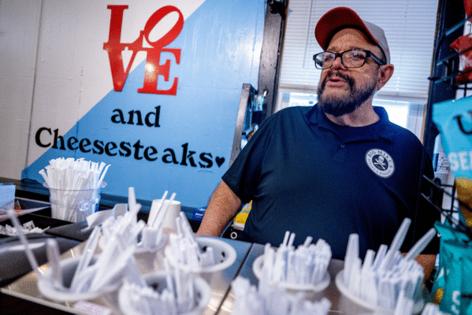
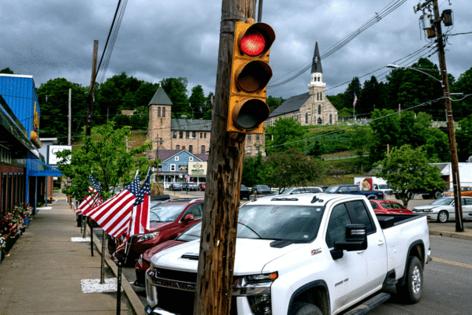
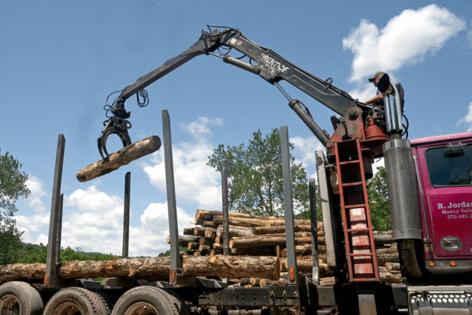
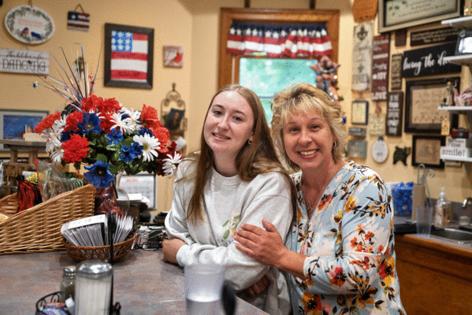
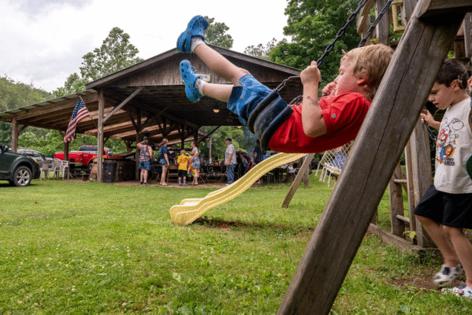







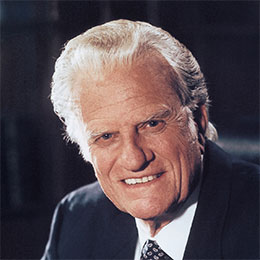








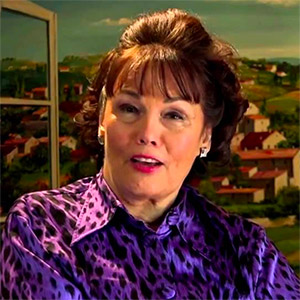



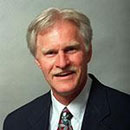







Comments